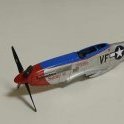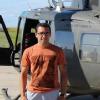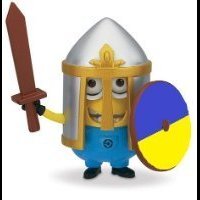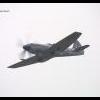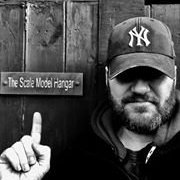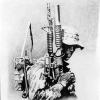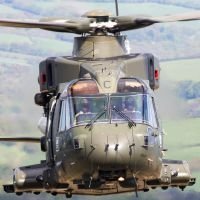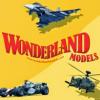Search the Community
Showing results for tags 'grumman'.
-
F6F-3 ProfiPACK Edition (8227) 1:48 Eduard The Grumman Hellcat was a US Naval World War II carrier based fighter aircraft designed to replace the earlier Grumman Wildcat. Although the two aircraft do look externally similar, the Hellcat was a completely new design from the ground up. The aircraft featured the Pratt & Whitney R-2800 as used by the Chance Vought Corsair and the Republic Thunderbolt. It proved to be a well-designed fighter able to stand up to carrier operations and the rough air fields used in the Pacific Theatre of operations. Grumman's initial design was so good that the Hellcat was the least revised aircraft of WWII. In total 12,200 Hellcats were built for the US Navy, The US Marine Corps and the Royal Navy. The Hellcat is credited with more kills in WWII than any other allied fighter. Post war the Hellcat was phased out of day fighter service but continued in US service as late as 1954 as a night fighter. One notable exception was in late 1952 when F6F-5K Drones carrying 2000lb bombs were used to attack bridges in Korea. Post war the aircraft were also used by the Aeronavale (French Navy), using them in Indochina; and the Uruguayan Navy who flew them until the 1960s. The Kit This marks a welcome re-release of Eduard's range of Hellcats from earlier this millennium, with a few tweaks and changes to the package, including using their new blue/grey styrene instead of the old chewing gum beige of yesteryear. The tooling is still the same, and that's already a well-known quantity, with plenty of detail that's augmented by the extras that come with the ProfiPACK boxing. Inside the orange-themed box you will find five sprues in the aforementioned grey styrene, a clear sprue, two frets of Photo-Etch (PE) brass - one of which is nickel-plated and painted, a sheet of pre-cut masks (not pictured), two decal sheets, and the glossy instruction manual that has the colour guide printed on the rear pages. Detail is good, although it's not leading-edge technology that you can now expect from Eduard's brand new releases, but it's a good kit that captures the look of the Hellcat and gives the modeller plenty of options for markings. Construction begins in the cockpit, with the instrument panel upgraded with a lamination of PE parts that have glossy printed domes over each dial for ultimate realism. The side consoles have decals to lay over the details, and if you don't fancy the PE instrument panel there are also decals included for that area too. The controls are added to the floor along with the seat with PE belts, rear bulkhead, control column and rudders, and the fuselage is then closed around it after some interior painting. The small rear windows have PE parts glued across them (I'd suggest clear gloss as your adhesive), the tail wheel and a belly insert are also added at this time, along with a slot that should be opened up if you're portraying an aircraft that carried a drop-tank. The elevators with separate flying surfaces are next, and the rudder is added to the tail fin at an angle of your choosing, in case you wanted your model to look a little more candid. Up front the two banks of pistons are fitted together and have a PE wiring loom added, with a diagram showing how it should be bent around the pistons, and the bell-housing at the front contains the shaft on which the prop will later spin if you're careful with the glue. This is fixed in place on a stub at the front of the fuselage, then enclosed in a three-part cowling with a PE grille installed in the bottom section during assembly. The exhaust stubs are glued into their troughs, and peek out from under the cowling once in place. The wings on this kit are relatively unusual in that they fit into recesses in the sides of the fuselage, rather than the usual tab and slot or full-width lower that you often see. This is due in part to the barrel-like fuselage and the wing placement on the lower sides of the fuselage, rather than at the bottom. Each wing has two halves and these trap the gear bay and gun inserts within, and accept the flying surfaces at their trailing edge before they are slotted into the aforementioned recesses on the fuselage sides. Small details such as gear bay parts, landing light and recognition lights are added to the underside, then joined by the main gear, which are sturdy single struts with separate oleo-scissors, retraction jacks, captive bay doors and very crisp resin wheels with a separate outer hub to show off the internal structure of the hub. The spaces between the spokes are flashed over, so will need to be cut or sanded away before fitting, and while this is a little fiddly, it is well worth the effort when you see the finished article. The gear is fitted in place with a small forward-folding door, the correct location of which is shown in a pair of scrap diagrams to ensure you get it just right. Depending on your decal option you can fit empty bomb shackles under the wings, and an additional fuel tank on the centreline, with PE sway-braces attached forward of the main lug. The last aspect is adding a few small lights and antenna on the upper fuselage, then gluing the canopy in the open or closed position, for which two sliding parts are included to achieve the best fit. The masks are all die-cut to match the frames, so masking should take only a few minutes thanks to this helpful inclusion. Markings There are five decal options in this boxing, all of which are painted in some variation of the Naval Sea Blue/Intermediate Blue/White scheme that is synonymous with the Hellcat, varying little in application in three of the options, and differentiated mostly because of the markings and crew personalisations. From the box you can portray one of the following options: flown by Lt. Oscar Chenoweth, VF-38, Segi Point airstrip, New Georgia Island, September 1943 flown by Ens. Gordon Arthur Stanley, VF-27, USS Princeton (CVL-23), October 1944 VF-8, USS Intrepid (CV-11), Summer 1943 flown by Lt. Lochridge, VF-34, Nissan island, 1944 OTU VF-2, NAS Melbourne, United States of America, October 1944 The main decal sheet is printed by Decals are by Cartograf, which is a guarantee of good registration, sharpness and colour density, with a thin gloss carrier film cut close to the printed areas. The stencil sheet is printed by Eduard, and is also up to scratch, with the locations of each stencil noted on a separate set of grey-shaded profiles on the very back page for clarity. Conclusion A welcome re-release of this plucky, robust WWII naval fighter that saw extensive action in the Pacific, and a nice broad choice of decal options that show plenty of individualism despite using the same base scheme. Highly recommended. Review sample courtesy of
-
Hi all and my first build for 2019, Grumman's X-29 for the Grumman Group Build here. The X-29 project tested forward swept wing technology and two aircraft were built, flying from 1984 to 1991. The short build thread is here but to recap: Kit: Hasegawa 1/72 X-29 kit number 00243 Build: Out of Box Paints: Halfords white from a can, Revell acrylics by brush for anything else! Klear. Flory Models wash (gear) and 4H pencil for some panel lines (thanks son). Decals: from kit Extras: Seat belts from Tamiya tape The wing decals are off - I didn't put them on right and they should meet the leading edge of the wing. Oh well, at least both the wings are wrong! But I enjoyed making something different and happy how it turned out. Hasegawa Grumman X-29_finish_9 by Dermot Moriarty, on Flickr Hasegawa Grumman X-29_finish_6 by Dermot Moriarty, on Flickr Hasegawa Grumman X-29_finish_5 by Dermot Moriarty, on Flickr Hasegawa Grumman X-29_finish_3 by Dermot Moriarty, on Flickr Since it's an X-plane, alongside Boeing's X-32 😉 Hasegawa Grumman X-29_finish_10r by Dermot Moriarty, on Flickr Hasegawa Grumman X-29_finish_14 by Dermot Moriarty, on Flickr And that's it! Thanks for looking and enjoy your modelling. Cheers, Dermot
-
My entry will be a Hasegawa EA-6B. I have an Eduard? cockpit for an ICAP II bird and Wolfpack folded wing set for the build. Decals will bee from a Cutting Edge sheet for a Marine jet, final scheme to be decided.
-
ROCAF S-2A/E/G Tracker (K48074) 1:48 Kinetic Model via Lucky Model Designed from the start as an Anti-Submarine warfare aircraft, the Tracker was powered by a pair of Wright Cyclone engines, the same type that powered the B-29. It entered service in 1954, and quickly acquired the nickname Stoof, from the S-2F variant. It was eventually replaced by the S-3 Viking in 1976 after a long service career with the US Navy, but continued to serve with other navies long after, with Taiwan being amongst them, using their airframes until the 90s, when Grumman upgraded the engines on most of their fleet to turbo-props, removing the big cylindrical cowlings and replacing them with a streamlined prop that looks really out of place when you first see it. The Kit The original Tracker kits from Kinetic have been with us now since 2011, and this is the first reissue in a while, portraying the Taiwanese Republic of China Air Force (ROCAF) airframes that were used until they were turbo-propped. It is also the first boxing to encompass the A, E & G models by adding additional fuselage, elevator, nacelle and outer wing panels that were originally included in the S-2A boxing into the E/G boxing to give a wider range of options. The A fuselage is shorter than the others, and as such a small portion of the weapons bay is removed to accommodate this lack of length. The A wings were more squared off, and have wingtip lights included, while the engine nacelles are broken down differently and have a completely different panel line arrangement for the A, with much shorter elevators. A simple cockpit is included, with the two crew seats as single parts, but with a nice instrument panel, that has a large central screen and plenty of raised detail. The seats are a little basic, but little will be seen once the fuselage is closed up, although the open access door on the rear bulkhead might need a cover, or perhaps a curtain making, to avoid a view into the empty rear fuselage. A few holes will need opening up before your choice of fuselage is closed, with the ventral radome and bomb bay shell trapped between the two halves, the latter needing shortening if you elect to build an A. Curiously, there is an open crew hatch on the starboard side, although there is no interior within - some scratch building will be required if you want to leave this open. The cockpit windows are part of a larger insert that encompasses the top section of the fuselage above the compartment, avoiding the trap of installing fiddly individual glazing parts. This assembly is split into two halves, with the seam running down the middle along a frame-line. An overhead console piece gives the joint strength, although the part is oddly still devoid of any switch detail all these years later. The inner wings have two large tabs that give it a strong attachment to the fuselage, ensuring that the correct angle is obtained. Onto these parts, the correct engine nacelles for your version are built up and attached to the wings once completed. It might be wise to assemble them in-situ instead, to avoid any complications with incorrect angles of the parts, and to ensure a good seam with as little sanding/filling results. Only the front row of pistons are depicted inside the cowling, with a spacer taking up the slack behind. The purists would probably obtain some aftermarket Cyclones here, but with a little careful painting and some ignition harness detail added, it should be adequate for most modellers. The long outer wing panels can be depicted open or folded, and have separate leading edge slat parts, with the aforementioned shorter wingtips of the A. To build the wings open, a pair of short plugs fill the gap, but I'd again be inclined to attach the parts earlier in the build than the instructions suggest, to ensure that the mating surfaces are joined accurately, and the wings end up straight. The folded option requires a detail insert installing, and the outer panels are then held in place by two pre-formed hinges that hold each wing at the correct angle to the airframe. The tail is fixed, and there is no option for posing the flying surfaces at an angle, other than getting out your razor saw. The large bomb bay can only be modelled as open from the box, and an alternative closed bay isn't shown in the instructions. That's a shame, but as a pair of torpedoes are included to busy up the otherwise blank bay, it's not the end of the world. The gear bays are nicely detailed, and have a good level of detail in them, although the super-detailer could of course go mad with the scratch-building materials here. Landing gear struts are made up from a number of parts, and should prove sturdy enough for most of us, while the wheels have separate hubs to please those that don't like painting wheels. There is no weighting to the tyres, but that is easily remedied with a few strokes of a sanding stick. A trio of rocket launcher tubes is included for under each wing, and a slipper-style radome affixes to the starboard wing to add a little visual interest. The large paddle like props with their square cut tips are well depicted, with a light panel line where the protecting strip appears on each blade's leading edge. Markings There are four ROCAF decal options on the large sheet, with a nice split between camouflaged and grey aircraft, although not much information regarding the individual aircraft is given. From the box you can build one of the following: S-2E Sea Blue/Light Grey/Mid Grey Camouflage (new Roundel) Tail No. 2128 S-2E Sea Blue/Light Grey/Mid Grey Camouflage (old Roundel) Tail No. 2150 S-2E FS36622 Grey (old Roundel) Tail No. 2123 S-2E FS36622 Grey (old Roundel) Tail No. 2127 S-2A FS36622 Grey (old Roundel) Tail No. 2102 The paint call-outs are given as AMMO codes on the black and white profiles, but there's a helpful chart on the rear that gives conversion details for Vallejo, Gunze, some Tamiya and a few Humbrol codes, which should make it easier to convert to your preferred paint system should that be required. Oddly, there aren't any decal options for the G, but hey-ho, as they say. The decals are designed and printed by Bestfong from Taiwan, who specialise in Taiwanese subjects, and they are very nicely printed with good registration, sharpness and colour density, plus a thin gloss carrier film cut close to the printed areas. As well as the decal options from the box, there are also strips of digits that could enable you to portray other options, but be aware that these numbers are all over-printed with a single layer of carrier film, so must be cut out individually. The stencils are shown on separate pages, using separate diagrams for the different camouflage variants. The A model's stencil layout seems to have been omitted from the instructions however, but I'm sure it's not too difficult to work it out. Conclusion A welcome re-release of this kit, and as it adds the A variant to the roster, it should appeal both to anyone wanting to model an early ROCAF S-2 (pre-turboprop era), and folks that might have missed out on the older boxings and wanted to play catch-up with their own aftermarket decals from another provider. Highly recommended. Review sample courtesy of
-
Which is the best available 1/72 Hellcat today? Built some during 40 years but untill today I never found a kit of quality and without problems. The worst kits have been the Heller and Italeri kits. Both comes with big problems to take care of. When it comes to the Italeri (also reboxed by Revell) there is problems with the engine, bad fuselage/windshield fit and the smal windows behind the cockpit (concerning variant to build - F6F-3 or F6F-5). There are also problems to get the landing gears and the flaps in correct position. https://www.scalemates.com/kits/162227-italeri-1213-f6f-3-hellcat The older Heller kit... https://www.scalemates.com/kits/158931-heller-272-grumman-f6-f-5-hellcat We have kits from Hasegawa, Academy, eduard. And we have the older kits from Airfix, Frog etc. What can be said and written about them? Cheers / André
-
Hi Fellow modellers! This is my last of 2017. It´s the old Airfix Duck, It was a fun kit to build, and despite it´s age it´s very good. I added some details to the cockpit, vacuformed a new canopy using a mould made modifying the original, and replaced the engine with the Starfighter Decals Wright R1820. The engine was allso modified to later version and the cowling was thinned and the exhaust made from scratch. Decals are from Starfighter too and are of great quality. I hope you like it and every critics and comments are welcomed! Best regards from Uruguay Ignacio
- 21 replies
-
- 35
-

-
This is my Grumman E-2C Hawkeye by Hasegawa. This took me longer then usual because the build was interrupted by a 2 week vacation . I can't think of anything negative about the kit; the fit was good and the decals were excellent. After some of my more recent more challenging kits this was a pleasure to build. I used the Eduard interior, but you can't really see much of the inside. This was one of the bigger aircraft I have built in a while and the next up is the Hasegawa P-3 Orion, which is even bigger. Enjoy.
- 10 replies
-
- 17
-

-
Hi all and this is my latest finish, the 1/144 OzMods conversion of the E-2 Hawkeye into a C-2A Greyhound. While 1/72 is normally my scale, I've always had a soft spot for this one. The full build is here but to recap: Kit: Heller Hawkeye (donor kit) and OzMods C-2A conversion set Scale: 1/144 Paints: White from a Rattlecan, all others with a brush. Future, FloryModels wash, W&N Matt Varnish (also brush) Extras: None Decals: From the conversion set, for VRC-30 'Providers' Really enjoyed this one and here's to all those who fly transport and haul stuff for a living... Thanks for looking. Dermot
-
Airfix 1:72 Wildcat build almost OOB with kit decals -After pre shading, all paints were as given in the instructions except the upper surface which Airfix gave as HU125 and was replaced by my own mix 5xHU125 5xHU127 2xHU25 to make USN M-485 -I tried blending in the lower windows with CA (A Phil Flory technique) then sanding and polishing once cured, Think I need some practice in this as the vapours got on the inside and did what CA vapours do. I wont write off the technique just yet. - Rudder decal was discarded and rudder painted with Tamiya white primer and HU 153 - Decals applied with MicroSol & MicroSet. - Model was given a coat of Humbrol Gloss Cote prior to decals, clay washes, oil dot weathering & Tamiya wethering masters then matted with Humbrol Matt Cote. - Aerial rigging was done with 0.12mm fishing line secured with UV cured glue (UV glue really makes this job so much easier) then tightened by holding a soldering iron near. - Kit jury stays were discarded as too thick and replace with lengths of Plastruct 0.3mm rod. Please forgive the stand its just a bit of printed paper blue tacked on to a unpainted base just for the pictures. Enjoy CT Thanks for looking Mark
- 21 replies
-
- 49
-

-
A-6A Intruder 1:48 Hobbyboss The Intruder was the eventual replacement for the successful and long-lived Skyraider (as was the A-4), and was unusual in having a side-by-side cockpit arrangement for the pilots, which meant a wide nose that became well known due to its involvement in operations and deployments around the world. Entering service in 1963 in the Vietnam war, it performed all-weather and night attack missions extensively throughout the conflict for the US Navy and the Marines, it had a long service life that was ended prematurely by the need to cut costs after the Gulf War. The A variant was the first into service, and incorporated some leading edge systems to enable it to fly low over terrain with little to no visibility. Due to the complexity of the systems, it was also equipped with a self-diagnosis system that could be used to test and report faults from within the aircraft without costly and time-consuming strip-downs, thus saving many hours in the hangar. The following variants showed the versatility of the airframe from buddy-buddy refueller to electronic warfare in the EA-6 Prowler, but the definitive variant is considered to be the later E, which was upgraded in the 70s with the TRAM (Target Recognition and Attack Multi-Sensor) turret that allowed it to drop laser guided munitions, further extending its usefulness. The Prowler was the last Intruder based airframe to be drawn down in 2009 and was replaced by the EA-18G Growler that took over electronic warfare duties. The Kit The A variant was the basic airframe for all Intruder variants that came after, with few changes to the aerodynamics, but plenty of changes to the equipment fits. Almost 500 were built of the A, and this is the subject of the kit. It arrives in a large flattish box with a painting of two Intruders flying over a mountainous area on the lid, and you wonder whether it's going to be one of those boxes that is way too big for the kit. Once you open the box, you find that it isn't, although there is a section at one end that it divided off to keep the canopy and other delicate parts safe from the mass of plastic in the box. The Intruder is also a surprisingly large airframe, with a long fuselage and large tail fin, which takes up a fair amount of room within the box. There are thirteen sprues of grey styrene, three of clear parts, a small fret of Photo-Etch (PE) brass, a bag of metal landing gear parts, two decal sheets, instruction booklet and two glossy sheets containing painting and decaling instructions. The detail on the parts is impressive, and the breakdown is that of a kit that has been designed to provide other variants, which have indeed just been announced for the 2014 year from Hobbyboss in the form of the A-6E and A-6E TRAM that I mentioned in the preamble. Good news for Intruder fans all round. Construction begins with the cockpit, with two nicely detailed ejection seats with PE seatbelts fitting into a cockpit tub that has substantial detail moulded in. The rear turtle-deck is also nicely detailed, although as you are told to glue it to the tub before it is fitted into the fuselage, getting the angle right might be tricky unless you offer it up to the fuselage and let it dry there in order to get it just right. The instrument coaming is also busy, and the instrument panel conveys a good likeness of the multi-layered nature of the real thing, although there are no decals provided for any of the panels for those that perhaps find the painting tedious or difficult. For no apparent reason the landing gear is built up next, and here HB have been clever and given the modeller a strong metal casting to act as the central support for the more detailed styrene landing gear parts, which should result in a handsome, strong depiction of the real thing that will stand up to the rigors of time, and the weight of any resin that you might add to your base model, because we all know that's sometimes quite tempting, don't we? The gear of a carrier based aircraft is always substantial due to the hammering it takes on a sometimes pitching deck, and this comes across well, particularly the nose gear with twin wheels and massive retraction link. The main gear centres are L-shaped and the end carries the two-part wheels, ensuring no problems with weight, while the styrene retraction jacks and outer-legs are purely cosmetic. In order to close up the fuselage, you need to make up the intake trunking amongst other parts, which goes full-length and includes the turbine face that one deck-crew member got to know intimately when he was sucked into the low-slung intakes on night-ops. The outer skin is separate from the trunking, making seam-fettling a little easier, and as they are only around 5cm long, it shouldn't be too hard to make them silky smooth. They are inserted through a hole in the front of the fuselage, necessitating the alignment of the outer skin with the fuselage side, which is just in front of the built-in crew access ladder. The instructions would have you install the aft fuselage mounted air-brakes at this time, but most modellers would probably wait until later for such a fragile part of the build. The detail within the bays and brakes is nicely done, and the brakes have the correct holes moulded in to allow air to bleed through when deployed. The nose-gear bay has separate sides to allow extra detail to be moulded in, and although the instructions show it being installed in the fuselage with the leg already attached, that isn't actually necessary. The arrestor-hook housing is added along with the rudder, which isn't glued to give some "wiggle", and the fuselage is closed up, then the radar that sits within the nose cone is added along with its bulkhead to the front of the fuselage, to be covered up later by the radome, which could be left open, but isn't that detailed inside out of the box. The Intruder's fuel-efficient wings are next, and as you would expect from a carrier-borne aircraft, they have a hinge-point to facilitate efficient stowage below decks. The wing inner portions have the exhaust bulges moulded in, plus the large flat gear bay sections, and have poseable flaps and slats, and pop-up spoilers on the upper surface, the tabs for which are simply cut off if you are modelling them closed. The kinked exhaust trunking is built up from a single part nozzle, two-part trunking and rear engine-face before being placed within the rear bulge at the wing root and enclosed in the other half of its fairing, and at the outboard end, a nice hinge-plate is added to a ledge within the wing that also has guides moulded in for the hinges themselves that pass through the plate. The inner wings are then mated to the fuselage sides, along a substantial mating area that includes the usual tongue and tab arrangement along the top edge. The outer wings have a similar hinge-plate added, plus poseable slats and outer flap sections, and a choice of two shapes of hinge for the clamshell decelerons at the tips of the wings, with one posed open with two deceleron parts, the other closed, using a single part to portray them at a near scale thickness. Clear formation lights are added to the front of each wingtip, and you then have a choice of using a straight linking rod for wings down, or an angled rod plus lots of ancillary linkages if you're posing it with the wings folded. The hinge-covers are also similarly different, with a single part for wings down, and two comb-like parts for folded. The APU on the top of the port wing root is shown deployed, but it wouldn't be difficult to close that up if you're minded, and the elevators, although they are of the all-moving type, are installed using the tongue and tab method, meaning that if you wanted to show them deflected, you'll have some work to do. The canopies are very nicely moulded with clear glazing and well-defined frames, which should make masking them pretty easy. The inside of the sliding canopy is fitted out with a "parcel shelf", retraction rails, a small instrument box on the centre rail, and an opening handle, plus a quartet of rear-view mirrors spread around the forward frame. The windscreen is fitted with a single part just off-centre on the frame that bisects the front screen, and both are fitted to the airframe after some interior painting. The radome that is mentioned earlier is capable of being mounted in the open position with a two-armed hinge that fits to the top and engages in matching slots in the radar bulkhead within the fuselage. A PE hinge fairing and two retaining clasps are added to the radome, but whether you feel the radome would need more work before being used in the open stance is entirely up to you. A simple thinning of the lip would be a good start, and as it's going to be difficult to see inside when the model is planted on the table, you could probably get away with just that. If you're posing it closed, just glue it on and add the PE parts, then you're done. The instructions advise you next to assemble and install the integral crew-access ladders before completing the outer skin of the engine nacelles, so perhaps skip forward over this step and come back to it later, unless you are planning on closing them up. It's not immediately clear whether the fit will be good if you close them, but if you feel it'll spoil the lines of your Intruder, it shouldn't be too difficult. The steps are a nice mix of styrene outer skin, PE side-frames and steps, with two more PE retention straps. The two steps within the engine nacelles are added from styrene parts, and of course this is repeated on the opposite side. If you skipped making up the ladders for now, the next job is to complete the engine nacelle outer skins, which is where your delicate ladders are likely to be rent asunder, causing much gnashing of teeth and wailing. Due to the Intruder's sub-sonic flight envelope, the intake trunking was simple and short, with the bulge of the engines contained by a large fairing that was removable for maintenance. This area of the fuselage is blank for ease of moulding, and the detail is added by installing an insert with separate auxiliary intakes added along the way, and the bulged door to the electronics bay sat between the fuselage mounted air-brakes, complete with a small transparent window. The main gear legs and their nicely detailed bay doors are added to complement the already installed nose gear leg and its doors, and these have closing mechanisms added as separate parts for extra detail. With airframe construction completed, the prodigious load-carrying capacity of the Intruder is demonstrated by a choice of weapons that hang from the two plyons on each wing and the centre-line pylon nestling between the two engine humps on the underside. The pylons make up from two halves, plus a pair of separate sway braces, which is a good start. The weapons are plentiful and varied, as follows: 1 x Centre-line fuel tank 4 x Wing mounted fuel tanks 2 x GBU-8 HOBOS guided bomb 6 x Mk.82 iron bomb 2 x M117 iron bomb 2 x multiple ejector racks 12 x Mk.81 small diameter bomb 12 x Mk.20 cluster bomb A diagram on the following page gives a suggestion for what each station might carry, but there's no substitute for checking your references for actual load-outs that were carried. There are no air-to-air weapons included in the box, so if you find a weapons load that includes them, you'll have to source some from the spares, or get hold of some of Eduard's excellent Brassin range of resin weapons. Markings The A-6A was in service during what's now called the hiviz (or variation on the spelling) period, with colourful tails, national insignia and black unit markings. Consequently, the decals are bright by modern standards, and with the tan radome, you'll end up with a bright Intruder on your shelf. From the box you can build one of the following: US Navy VA-115 Eagles, USS Midway 07/NF Bu.No. 155715 grey over white, tan radome, black tail with grey tip and yellow flashes on tail and fuel tanks. US Navy VA-35 Black Panthers CVW-9 USS Enterprise, 10/NG Bu.No. 152940 - grey over white, tan radome, black panther motif on a white circular background on the tail. Decals are printed by an unknown source, but are typical of Hobbyboss quality, with good printing, register and colour density, although there is a little over-printing of the yellow past the edge of the white background, and a very slight mis-register of the black that shows under magnification on the slime-lights on the fuselage sides, and the apparently undocumented wrap-around lights on the wingtips, which are shown on the decaling diagrams but not numbered. The stencils are shown on the same diagram as the unit and national markings, so at times it gets a little cluttered, but if you take your time, it shouldn't cause you any problems. The decals for the munitions are on a separate sheet, and the single page bomb painting and decaling diagram shows where everything goes. If you are portraying the Black Panthers airframe however, a quick check on the colour of the drop tanks reveals that they weren't painted in the same fashion as is shown on the diagram in the style of the Eagles scheme. It appears they were plain white in the pictures I have seen, but if you're not quite awake when you build and paint them, you could easily make that mistake. Conclusion This looks to be a promising model of the early Intruder, and certainly comes loaded with detail sufficient for a great many of us out of the box. The inclusion of metal gear leg centres, PE brass parts and plenty of modern slide-mould use gives it the edge, and once the A-6E and TRAM variants are available, the Intruder will be well-served by modern toolings in this scale. To get you in the mood, why not watch (or re-watch) the Flight of the Intruder, an oldie but goodie, with plenty of in-flight footage to get your enthusiasm going. Caution before clicking the YouTube link, as there's a little bit of bad language scrawled on the bomb passing the lens at the beginning of the clip. Highly recommended. Review sample courtesy of
-
A wee bit of a test to see if I can still post photies on the new set up forum. I back-dated the old Airfix Grumman Avenger to a Mk1 Tarpon of the FAA. A lot of the info for doing this was gleaned from this very Britmodeller Forum Changes and improvements are; fish-bowl observation windows, gun trough in top front of fuselage, removal of chin intake & reprofiling of engine cowling with the reduction of the number of cooling fins. Exhausts drilled out and replaced with sliced aluminium tubing. Guns changed for white metal ones. Yagi aerials correctly positioned and made from plastic strip. Main radio aerial raked backwards. Better crew figures installed in three positions. Wheel wells boxed in. Thinner bladed prop, from an Airfix F4U Corsair. Decals all came from the files.
- 17 replies
-
- 30
-

-
Airfix is to release in 2016 a 1/72nd Grumman Martlet IV kit - ref.A02074 Source: http://www.airfix.com/uk-en/news/workbench/exclusive-new-2016-announcement-airfix-at-ipms-telford/ V.P.
-
Hi. I present my new model with topic "Yellow Wings". This time: Grumman FF-1 (FiFi), which is my first biplane. Model present FF-1 with VF-5B "Red Rippers" on the USS "Lexington" in 1934. ---- Previous parts: Yellow Wings part 1 Northrop BT-1 Yellow Wings part 2 Vought SB2U-1 Vindicator Bye for now, Jaro
-
Hi all, No pics organized yet, but I've done enough to at least admit to it. I'll update this later with the backstory (that's not organized yet, either!) Imagine, if you will, that when Grumman was asked to investigate a swept-wing carrier fighter when their F9F-2 was given the green light, rather than going too far with requirements and airframe in the XF10F program, they had instead successfully argued to keep it simple and just build a small testbed that also had potential as a fleet-defence interceptor/ day fighter? I got the kit because when it was announced I saw the resemblance (in some ways) to the XF10F. I don't care about the Tunnan enough to spend a bunch of money on a decent kit of it, and I figured for my purposes the under-nourished factor wouldn't really matter. As it turns out, I'm finding it quite freeing- it has given AMS a knock, and I'm taking advantage of this temporary opportunity to be slapdash, not let things cause stumbling blocks, and JUST HAVE SOME FUN (also known as "actually build the damn thing")! I don't recommend such drastic measures for all- use at own risk. bob
-
Hello all, this is my latest completion, Accurate Miniatures 1/48 Grumman Avenger. This kit is no shake and bake model, but with some effort it can be built without too many drama's. I chose to build a subject close to my heart: This Avenger is JZ670 "AHBX" of 707 Squadron Fleet Air Arm. She was an Avenger Mk.III and she can be seen in the photograph below during her time at HMS Ringtail in West Lancashire, England. In an attempt to bring my Avenger up to Fleet Air Arm Spec, I scratch built an observers position behind the pilots seat. This involved installing a seat, fold out table and instruments. I did the best I could, but I have no idea how accurate my efforts have been. On that note I would like to say thanks to the forum members here who went out of their way to give advice and share references. I used the Freightdog Models decal sheet "Brits at Sea-Part 1" for the 707 sqn markings and I mixed my own shade of Gloss Sea Blue from Tamiya acrylics. I like the colour, again it may not be "spot on" Here are some photo's of the finished model, I hope you like it! You can see more pics of this build and it's W.I.P. on my blog. http://thescalemodelhangar.blogspot.co.uk
- 36 replies
-
- 48
-

-
Hello, I just finished the Trumpeter 1/48 Italian Air Force Grumman Hu-16 Albatross . I like this plane so I added a lot of features like engines, sound and lights. I had a lot to rework because nothing was "italian", but just a base version with italian decals (wrong and lacking). I had to add or modify a lot of antennas and other details and add or build lacking decals. I hope you like it. Find a movie here https://www.flickr.com/photos/angelomoneta/24955771903/in/photostream/ and more pictures here https://www.flickr.com/photos/angelomoneta/with/24955771903/ Angelo
- 15 replies
-
- 25
-

-
OK, a very late start for this one but I do have an excuse... It was an eBay bargain and I only got it in the post on Monday! I know it's 90% built and in primer but it's so well engineered that I had it together in under half an hour! This is truly an amazing kit! Barely any seams to deal with, it helped that the fuselage is split as upper and lower rather than left and right, and absolutely no need for filler. I had so much fun putting it together I really did forget to take some photos, I promise I'll get some as I paint it.
-
Morning all, Sneaking over the line just before new year are my final two completions, the Airfix Wildcat and Tamiya Corsair. Both in 1/72 and completely out of the box. Two very neat little kits. Thanks for looking, comments welcomed Happy new year Shaun
- 17 replies
-
- 41
-

-
I have a soft spot for Grumman's cats. From the cute Wildcat, to the butch Hellcat and all the way to the flashy Tomcat, I think the company has built some of the best looking fighter aircraft in history. Over the summer I started a double-build of the venerable Hasegawa kits of both these planes. It's taken quite some time to finish them, but here they are. Both kits are built straight out of the box, apart from the Sidewinders, which come from the Hasegawa Weapons Set III. Colors are Gunze acrylics and Tamiya white primer. In particular the Tiger is really a candidate for a new tooling, it has raised panel lines, most of which disappear after you have taken care of the fuselage seams. Apart from that it goes together very well, I only needed some filler on the intakes, which are a slightly dubious fit. The main landing gear is a bit of a vague fit, but doable with some trail and error. The decals had yellowed but I was lucky to get another set from a fellow BM-er. Unfortunately no aftermarket decals are available for this kit. It's decidedly underrepresented by both kit manufacturers and aftermarket companies. The Cougar is slightly newer and has the traditional Hasegawa panel lines, very fine, a bit too fine on the underside, I struggled to get the wash to adhere to them. This kit also needed some filler around the intakes and the rear wing to fuselage joint, which requires quite a lot of filler to smooth out. Apart from that, it's an easy build. This was also an older boxing and in this case the decals had both yellowed and cracked. The Cougar also isn't a popular aftermarket subject, but PrintScale do a nice sheet with some Panthers and Cougars, which I used. I believe Sword do a modern tooling of the Cougar but as far as I'm aware not the fighter version. I'm very happy to have these lovely 50s cats in my collection. Hopefully we'll get some modern toolings of both, which will be the perfect excuse to build some more of them.
- 22 replies
-
- 29
-

-
Evening all, Having run out of steam a little with my Battle of Britain project, I've switched my attention to my main area of interest, naval aviation. I started a Hobby Boss F9F last week, but couldn't resist making a start on another couple of classic fighters whilst the Panther trickles along in the background. Having been o impressed with the Defiant, I wanted to crack open another of Airfix's recent toolings, and having picked up the Wildcat and Kate dogfight double, the F-4F seemed an obvious choice. My pair of Tamiya Corsairs have been screaming at me from the stash for some time now too, so I thought, given the similar schemes worn by the Wildcat and the Birdcage variant of the Corsair, I might as well crack open the latter at the same time. Both seem lovely kits, the Tamiya especially, though I guess that's to be expected. So, first progress, and after a bit of construction the cockpit interiors have been sprayed. Whilst not altogether interesting in itself, the answers to my questions in my other thread, and the IPMS Stockholm website proved to be fairly enlightening regarding the colours. The IPMS Stockholm page contains information regarding these colours specific to the types, revealing that my usual go-to colour of interior green was not accurate for either of these aircraft. For the Wildcat, and indeed most Grumman types it seems, a darker, Bronze green was used, whilst the Corsair had a dark dull green interior, as confirmed in my question thread. The latter is a little less clear cut it seems, but images posted by LanceB in my question thread of a recovered wreck seem to match with this green rather well. For the Wildcat, the Stockholm colour charts recommend Hu 75 plus a touch of other greens, which I was happy to ignore, as the neat 75 looked reasonable to my eye, whilst Hu 149 was suggested for the Corsair. This seemed a little bright straight out of the (very old!) pot so I darkened it a little with some of the Hu 75 and some black. Neither are 100% perfect, but not too bad I reckon, and lets face it, it'll be pretty difficult to see inside either cockpit once everything is closed up. Next step will obviously be to detail paint and weather the interiors, and I shall also set about getting the remainder of the interior colours laid down, notably that wonderfully garish pink in the corsair tail Thanks for looking, comments welcomed Cheers Shaun
-
KA-Models is to rebox the Fujimi 1/72nd Grumman F-14A Tomcat kit- ref.???? F-14A 'Jolly Rogers 1978~1991' Sources: https://www.facebook.com/KAMODELS2007/photos/a.390320164315130.111612.185804791433336/1106701499343656/?type=1&theater https://www.facebook.com/KAMODELS2007/posts/1108277229186083 V.P.
-
We've just this week received our stock of the 1/72 Grumman F4F-4 Wildcat Plastic Model Kit from Airfix! This detailed, new tooled model kit, based on the WWII era American carrier-based fighter, comes with a choice of 2 sets of decals! For more details, check out our newsletter here.
-
I'm calling this one "done". I had started the Goblin back in early 2014 - likely somewhere between February and March. It started out to quite simple. Fit was decent, not a lot of filler needed for the fuselage or lower wings; and then came the interplane struts which began my slow decline into insanity. I put the kit aside for the rest of the year. Then I made myself a resolution: any kits that I had started in 2014 or prior that I still had (i.e. that were not tossed into the bin) would be finished before starting any "new" kit. This helps keep my better half happy because I'm not only not creating more clutter by adding to the "I'll get to it when I get to it" pile but also it should help the budget - no new kits being purchased because I'm busy with the current stash. So here it is - first one of 2015. The port wing is just "not right" - but it's close enough that I would call this "done" (as opposed to "finished" :D ) - the aforementioned interplane strut didn't have the correct angle so both the upper and lower wings are a bit askew on the starboard side. The rest of the kit though, well, it ain't half bad in my opinion Cheers, Dave
- 14 replies
-
- 21
-





